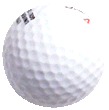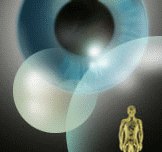|
Net digitizing



Categories





|
 Contact
us Contact
us |
|
General info
+1 949 858 4216 |
|
Sales & support
+1 619 992 3089 |
|
E-mail
Information
Sales
Support |
|
CHECK OUT
[FrontPage Include Component]
|
| |
A BIOMECHANICAL STEP ONTO THE INTERNET
by Gideon B. Ariel, Ph.D.
 INTRODUCTION: During
the last two decades, enormous progress has been made in the field of biomechanical
instrumentation. The introduction of the first electronic digitizer constituted a
significant improvement to existing methods and replaced the traditional tracing technique
that employed paper, pens, and mirrors. INTRODUCTION: During
the last two decades, enormous progress has been made in the field of biomechanical
instrumentation. The introduction of the first electronic digitizer constituted a
significant improvement to existing methods and replaced the traditional tracing technique
that employed paper, pens, and mirrors.
Prior to 1968, manual processes involved in biomechanical quantification were slow,
tedious, and frequently contaminated with arithmetic error. Subsequently, computerization
of many of these steps has accelerated the growth and widespread acceptance of
biomechanical applications. One of the immediate applications of these computerized
innovations occurred in area of Olympic athletic competition: (1) The electronic digitizer
not only decreased the time needed for locating and storing joint center coordinates, but
also reduced many of the tracing and measurement errors. (2) In addition, computers
allowed data-gathering and analysis of biomechanical data to occur in different locations.
The "digitizing" process could thus be conducted at one location and the
digitized points transferred on-line to the time sharing system on a main frame computer
for further processing. However, although this milestone represented a giant leap in
precision and productivity, the limitations of the mainframe computer's architecture
severely limited the public's access to this new form of technology. Frequently, only
professional athletes or those with generous supporters have access to this limited and
quite expensive technology.
 Later on, as everyone has seen, computers themselves have evolved, and taken
on new forms, capacities and applications. Mainframe-based data processing has since given
way to client/server computing over a variety of local and wide area networks. The advent
of the Internet and the commercialization of the World Wide Web have opened up new
horizons never before imagined in many high tech areas involving science, business and
engineering. Simultaneously, rapid advances in video and multimedia technology have made
possible the presentation of information in much more natural, lifelike and easily
comprehensible ways (e.g. three-dimensional and virtual reality images). The Internet and
its new generation of computers has indeed opened a new frontier for research and
international cooperation on multifaceted studies including the field of Biomechanics. The
Internet and its new generation of computers has indeed opened a new frontier for research
and international cooperation on multifaceted studies including the field of Biomechanics. Later on, as everyone has seen, computers themselves have evolved, and taken
on new forms, capacities and applications. Mainframe-based data processing has since given
way to client/server computing over a variety of local and wide area networks. The advent
of the Internet and the commercialization of the World Wide Web have opened up new
horizons never before imagined in many high tech areas involving science, business and
engineering. Simultaneously, rapid advances in video and multimedia technology have made
possible the presentation of information in much more natural, lifelike and easily
comprehensible ways (e.g. three-dimensional and virtual reality images). The Internet and
its new generation of computers has indeed opened a new frontier for research and
international cooperation on multifaceted studies including the field of Biomechanics. The
Internet and its new generation of computers has indeed opened a new frontier for research
and international cooperation on multifaceted studies including the field of Biomechanics.
With rapid advances in networking, communications and presentation technology, it is now
possible to make the benefits of biomechanics much more accessible to a wider audience and
a greater range of applications - with its usage gradually migrating from athletics to
space and sports medicine, and further extending its impact well into industrial design
and general medical practice Although the restrictions due to geographical distance, time
discrepancies and relatively slow throughput over analog phone lines still pose some
limitations, the use of the Internet and multimedia promises to greatly facilitate the
acquisition of x, y coordinates, enhance cooperative research efforts. One technique for
acquiring motion coordinates, that is, "digitizing" on the Internet, has been
developed for the purpose of facilitating research inquiries.
METHOD: The
purpose of the present study was to test a newly developed technology for digitizing
between remote sites using the Internet as the communication medium. In other words, the
video sequences resided on one computer and the remote site was responsible for securing
the x,y coordinates through on-line processing.
 Golfers were filmed during a local club competition. All
golfers performed the same golf drive at the same location that was selected for the test
sequence. Two cameras were placed at approximately 45 degrees to the plane of the path of
the golf swing and were camouflaged in a manner that would not distract the competitors.
Following data acquisition of all the participants, one swing for two of the contestants
was selected for further analysis. Golfers were filmed during a local club competition. All
golfers performed the same golf drive at the same location that was selected for the test
sequence. Two cameras were placed at approximately 45 degrees to the plane of the path of
the golf swing and were camouflaged in a manner that would not distract the competitors.
Following data acquisition of all the participants, one swing for two of the contestants
was selected for further analysis.
The video sequence was "grabbed" or "captured" using a frame-by-frame
advance VCR. The video data was stored in AVI format on a computer located at Site A while
the digitizing computer, Site B, resided at a distance of approximately 1500 km. The first
step was determination which the specific portion of the golfers' swing was to be selected
for subsequent analysis. Although the actual digital data was stored on the computer
located at Site A, the researcher examined the video portion, frame by frame, on his
screen at the remote site, Site B. The resolution at each site is determined by the size
of the pixels at the digitized site (maximum 72 dots per inch). The researcher at Site B
examined the specified sequence field-by-field by controlling the server computer and
selected a sequence for analysis.
After determining the portion of the performance for analysis, the researcher had to
define the joints to be digitized. Specialized instructions were presented for defining
the specific joints, such as the foot, ankle, knee, hip, as well as the golf club and
ball. Following several other steps for naming and labeling files, the actual digitization
began. As each of the selected points were digitized, the x,y coordinates for that point
were determined immediately and were stored on the server computer in the appropriate
file. The digitized points, in concert with the Common Gateway Interface (CGI), created a
matrix of x,y, coordinates for further analysis. If only the two-dimensional analysis (2D)
had been desired, the analytic portion would have been performed at this point. Since, 2
cameras had been used to record the event, it was also possible to obtain the preferred
three-dimensional (3D) analysis. Therefore, the digitization process was repeated for the
second camera view.
Following the digitization procedures, the researcher had to establish an interface to the
server using the a commercially available program, namely, the HTML version 3 of Netscape.
For this study, an ISDN telephone line was used with a transmission speed of 128K bits per
second. This type of communication line normally requires less than 2 seconds to download
each image. Since not all digitizing sites would have ISDN capabilities, the same sequence
was tested using a 28.8K modem. The transmission time required using the 28.8K bits per
second modem was about 15 seconds per image. It was determined that the test sequence was
a length which reasonably reflected a normal, acceptable time allocation for biomechanical
researchers.
 RESULTS: After
establishing the interface with the server, the researcher at Site A transmitted each of
the digitized view files from the server (Site B) to his own computer at Site A using the
File Transfer Protocol (FTP) Internet function. The files were reconstructed at Site A to
determine if the data had been transmitted accurately. The data was confirmed to be
identical to the duplicate set that was stored at Site B. Essentially, in Internet terms,
the entire process consists of the following steps: RESULTS: After
establishing the interface with the server, the researcher at Site A transmitted each of
the digitized view files from the server (Site B) to his own computer at Site A using the
File Transfer Protocol (FTP) Internet function. The files were reconstructed at Site A to
determine if the data had been transmitted accurately. The data was confirmed to be
identical to the duplicate set that was stored at Site B. Essentially, in Internet terms,
the entire process consists of the following steps:
 |
Analog video data is captured off-site and off-line
through the use of a frame-by-frame advance VCR. |
 |
Analog video data is converted off-site and off-line to
digital video data in AVI format. |
 |
Digital video data in AVI format is transmitted via FTP
from a remote PC (browser) to a web server. |
 |
The web server, converts the AVI frames into individual
GIF files. |
 |
The web server, through CGI, super-imposes the x,y,z
coordinates on the video images. |
 |
The web server sends back the processed (digitized) image
frames back to the remote PC (browser) with all pertinent mathematical and physical
observations and conclusions. |
The results demonstrated the use of the Internet to
digitize kinematic data collected and maintained at one geographic location while the
researcher was located at a second site.
 DISCUSSION: The
study successfully demonstrated that digitization is a biomechanical task which can be
performed between different geographical locations using the Internet as the interfacing
medium. The applications of this technique and intellectual resource appear unlimited. For
example, a golf teacher in New York can video his students' swings. These video clips can
be transmitted digitally in AVI format to a server in one part of the world and then
interfaced to the biomechanical program for further analysis. Many Olympic events make
fixed laboratory studies difficult, such as equine, sailing, or distance skiing. Coaches
can film actual performances on site using cameras with direct AVI format input attached
to Laptop computers. These files can then be digitized or transmitted through Internet
protocols. DISCUSSION: The
study successfully demonstrated that digitization is a biomechanical task which can be
performed between different geographical locations using the Internet as the interfacing
medium. The applications of this technique and intellectual resource appear unlimited. For
example, a golf teacher in New York can video his students' swings. These video clips can
be transmitted digitally in AVI format to a server in one part of the world and then
interfaced to the biomechanical program for further analysis. Many Olympic events make
fixed laboratory studies difficult, such as equine, sailing, or distance skiing. Coaches
can film actual performances on site using cameras with direct AVI format input attached
to Laptop computers. These files can then be digitized or transmitted through Internet
protocols.
Biomechanical quantification has developed far beyond the pioneers who relied upon visual
observations of animation to describe movement. The revolution continued with improvements
in cameras, the introduction of computers, development of various algorithms to better fit
the data, and expansion beyond sports studies. Additional innovations in the process are
expected as the Internet further evolves into newer presentation technologies involving
animation and virtual reality (e.g. Java and VRML).
The ability to quantify motion has appeal to many groups and at many different levels.
Access to global resources via the Internet expands biomechanics beyond a fixed
geographical location. This has direct applications in medical research and industrial
engineering where, frequently, transmission and processing of research data between remote
sites has to occur in real-time mode.
Thus, the subject presented and studied in this document represents a very significant
threshold in furthering the accessibility and applicability of Biomechanics to several
scientific, medical, industrial and aeronautical endeavors far beyond its present reach.
|